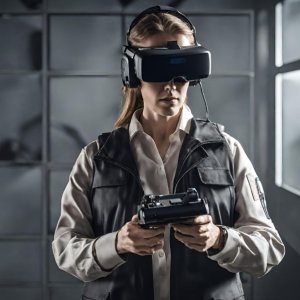Just a decade ago, augmented reality (AR) remained a technological curiosity confined to university labs and niche industrial applications. But the breakout success of Pokémon GO in 2016 brought AR, albeit in a primitive form, into hundreds of millions of everyday smartphone users’ hands. At the same time, rapid software and hardware advancements primed the stage for AR’s utility to expand tremendously across both enterprises and consumer segments – signaling steady mainstreaming adoption beyond initial fads today.
The Early Days – AR Starts Finding Real-World Purpose
While the concept of AR evolved over 50 years spanning computer science labs at Harvard and MIT, large tech companies began advancing functional use cases by the early 2010s. Applications for supporting assembly line factory workers and mechanics began emerging via “smart glasses” by pioneer startups like Upskill and Vuzix. Google translated AR’s potential into living rooms with its visually stunning but short-lived Glass prototype in 2014 – although mass-consumer pricing and aesthetic barriers persisted.
Pokémon GO Sparks the Imagination…and Rapid Learning
When Pokémon GO demolished app store records through location-based AR gameplay in 2016, the world glimpsed AR’s latent appeal. The app brought image recognition and camera-based features once restricted to costly equipment into popular grasp. And while the initial frenzy stabilized quickly, lasting user retention and $5 billion in lifetime revenue underscored durable mainstream receptivity.
Importantly, Pokémon GO generated troves of data, infrastructure expansion, and developer momentum that crucially de-risked AR capabilities for other mobile use cases. Snapchat and Instagram riding the AR momentum introduced viral immersive filters, cementing user readiness. Crucially, Apple cementing rear-facing 3D sensor hardware across all iPhone 12 variants ensured hundreds of millions would steadily access AR-enabled tools, aligning key ingredients for incubation.
The Blossoming of AR 2.0
Buoyed by mature software toolkits like ARKit, ARCore and EASYAR coinciding with enhanced smartphone cameras and sensors, AR adoption moved rapidly from novelty imaging to nuanced utility since 2020. Houzz and IKEA fostered interactive product previews letting home furnishings shoppers “place” lifelike 3D models into living spaces before buying––yielding over 40% sales conversion uplifts.
Warby Parker’s app transcended traditional barriers in vision care access by using phone cameras and AR screens to determine eye prescriptions remotely through Virtual Try-On. Beauty brands e.l.f Cosmetics and L’Oreal enabled virtual makeup application eliminating in-store testing hassles. Gucci developed an AR shoe customizer highlighting endless permutations to unlock bespoke footwear.
The capabilities showcase AR’s span across lifestyle verticals – not just gaming – ready for converting online browsers into frictionless buyers using their own mobile devices. No longer a “Someday” technology, AR’s present capabilities for enterprises and startups represent a competitive necessity and advantage.
An Immersive Future En Route
Current smartphone-dependent experiences offer just a glimpse into endless frontiers opening as dedicated AR headsets and smart glasses enter the market between 2023-2025. Apple and Facebook parent Meta especially are betting big on augmented environments as the next computing platform anchored around their devices allowing 3D overlays onto real-world views ubiquitously.
As mobile connectivity expands globally while spatial computing platforms mature, AR holds untapped utilities from learning to data visualization that recasts life as we know it. But core enablers now stand proven after earlier frugal experimentations paved initial inroads showing average users the magic of digitally enhanced realities––and pulling once-distant futures into the present. Much like the web or GPS before it, AR’s pervasive influence going ahead remains more inevitability than uncertainty as pioneering gives way to democratization.






